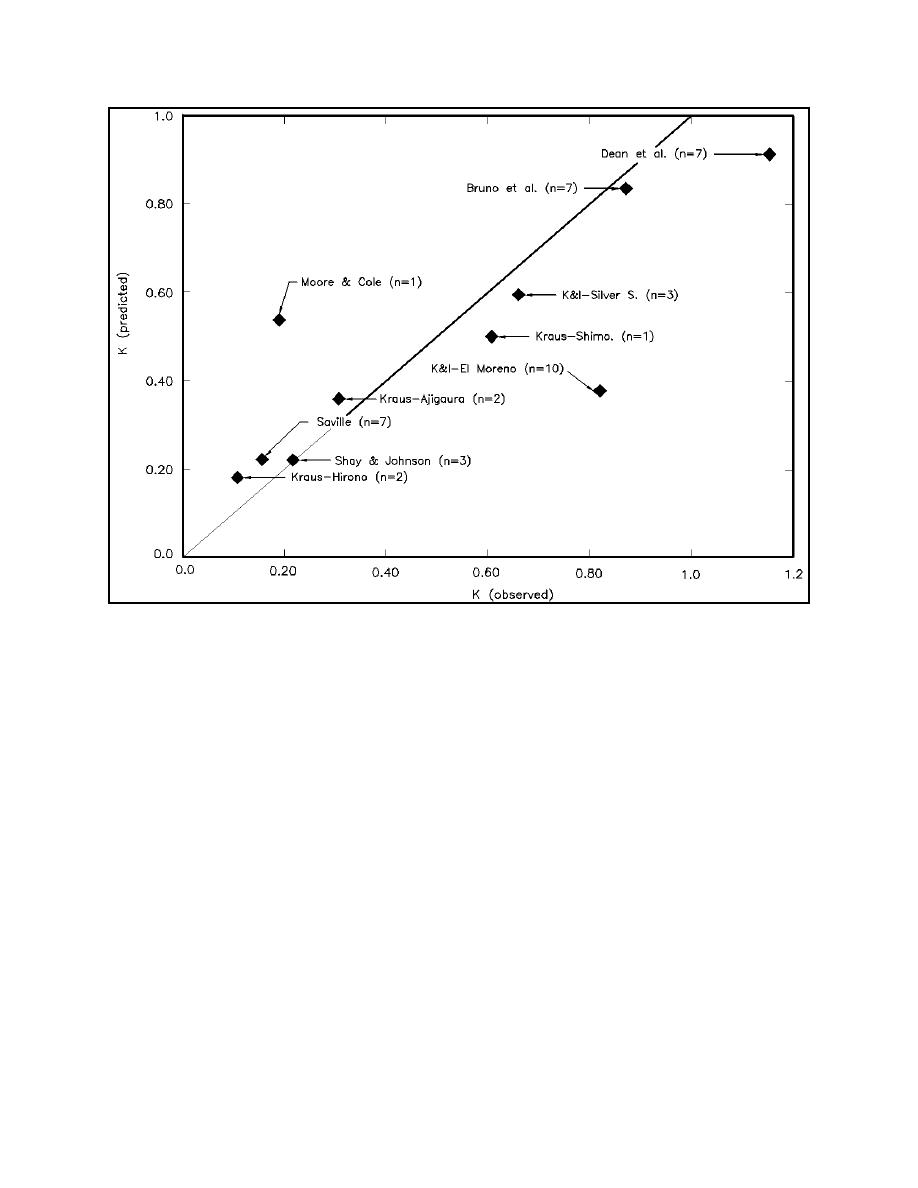
EM 1110-2-1100 (Part III)
30 Apr 02
Figure III-2-5.
Measured and predicted K coefficients using Bailard's (1984) equation
where D50 is the median grain size of the beach sediment in millimeters. This relationship is based on limited
data and depends strongly on the data from the Adra River Delta.
(d) While it is generally thought that the K coefficient should decrease with increasing grain size, the
nature of this relationship is not well understood at present. Again, because of the limited data set and
inherent variability in measuring longshore sediment transport rates, predicted K coefficients may vary
considerably from appropriate values for any particular site.
(4) Variation of K with surf similarity.
(a) From laboratory data, a relationship between K and the surf similarity parameter ξb = m / (Hb/Lo)1/2
has also been observed (Kamphuis and Readshaw 1978). These data suggest that the value of K increases
with increasing value of the surf similarity parameter (i.e. as the breaking waves tend from spilling to
collapsing condition).
(b) Numerous other relationships for predicting longshore sediment transport rates exist (e.g., Watts
(1953a), Kamphuis and Rea shaw (1978), Kraus et al. (1982), Kamphuis et al. (1986), Kamphuis (1991)).
A promising empirical relationship based principally upon laboratory results is that developed by Kamphuis
(1991) which correlates well with laboratory and field data sets. However, for application to field studies,
the use of a physically based relationship based solely on field data, such as the one presented herein (often
called the CERC formula) is preferred.
III-2-14
Longshore Sediment Transport


 Previous Page
Previous Page
